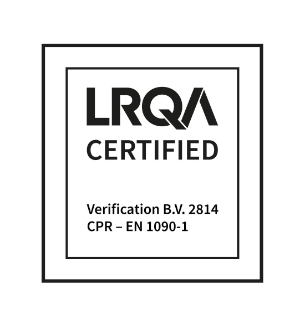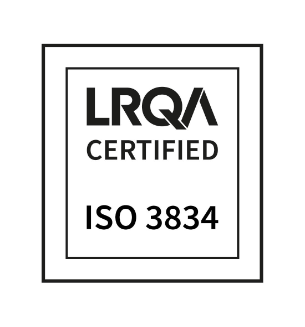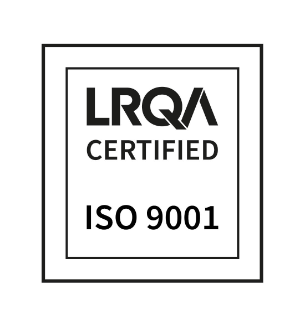Knowledge centre
6.a Laser-cutting profiles
The principle behind the laser-cutting process for profiles is the same as the explanation given in chapter 6. Laser cutting. The same gases are used for this.
The process is controlled with the aid of a CNC control. The process is controlled with a CAD-CAM coupling, for which we use FX-Tube. This is a system for tube and profile machining that converts imported solids of 2D CAD data into complex programs. This system also has a 3D simulation mode Fig. 6.a.2 for interactive fault detection, among other things.
Some advantages of the laser cutting of tubes and profiles.
- Time-saving in the preliminary stage. Designers and engineers can, on the basis of their design take the many possibilities of tube laser cutting into account.
- Take into account time-saving after processing.
- By applying positioning tabs, dimensioning becomes virtually unnecessary in the welding department. No welding jigs are needed either.
- Very short machining time.
- Very accurate cutting down to 0.1 mm; this depends on the dimensions of the product.
- 3D laser cutting: The ability to set the cutting head below 45 degrees and then rotate it makes it possible to cut entirely in 3D. Fig. 6.a.3
- There is less distortion than occurs with sawing, • drilling, milling and punching.
- A seamless connection is to be created from • round to square profiles, for example.
- Unprecedented high degree of design freedom.
- Time-saving in the preliminary stage. Designers and engineers can, on the basis of their design.
General information.
A tube laser machine consists of a clamping device, laser cutting head and a feed and removal magazine. The clamping device itself consists of 4 parts: 3 loose chucks (of which the 2 outermost have a mandrel) and a fixed chuck. The loose chucks can move along the X-axis for, among other things, feeding and removing the product. These can also rotate on what is called the C-axis.
For the laser head, this is another story: here, we have to deal with the Z-axis: laser head up and down, the Y-axis: moving perpendicularly across the product, the A-axis: for rotating around the Z-axis, and the B-axis: for rotating in the longitudinal direction of the product. (Fig. 6.a.4)
The laser head is the base point of the machine. It has the possibility to move around and along the aforementioned axes in order to be able to apply the most divergent contours. To allow the tube to move, we use the clamping device. Fig. 6.a.5 The loose chucks with mandrel can be compared with a four-jaw chuck of a rotary lathe. They clamp the material to be machined firmly in place and can also rotate. The laser cutting head contains a support called the fixed chuck Fig. 6.a.6, which has 4 rollers for smooth longitudinal movement of the product. This support sits as close as possible to the laser head so as not to experience any loads caused by possible bending of the material.
If the loose chuck with mandrel is moved all the way back, a new tube or profile can be clamped in place. This has already been laid in the correct position by the magazine, so that this is able to grip the clamping device properly. Next, the material is pushed up to the laser head by the fixed chuck. After scanning, the position is determined and cutting can commence. Once the product is ready, it will drop, regardless of its length, into a bin or be placed in the finished products magazine by the loose chuck with support.
We can machine the following dimensions and profiles.
- Maximum dimensions of round tube: Ø 220 mm.
- Maximum dimensions of profile: 200 x 100 mm and 160 x 160 mm (ø diagonal of diameter 220).
- Maximum profile length: 8000 mm.
- Maximum wall thickness: steel 15 mm / stainless steel 8 mm / aluminium 5 mm.
- Maximum product weight: 330 kg.
- Maximum product length is trade length minus 320 mm. This is the machining loss.
- *foto bestaat niet* shows a number of profiles we can process. Exotic variants can also be machined; however, the supplied drawing must agree exactly with the material.
Information to be provided.
We can import .DXF, .DWG, .STEP and
.IGES files and a number of other formats. It is very important for the drawing to agree fully with the material to be cut. An example is the internal and external radius of tubular profile or angle bar. The supplied files are also critical for determining the final product. The customer is therefore personally responsible for supplying correct files. In some cases, we are prepared to make a drawing of the supplied design ourselves and write a program for it. It is clearly important that all dimensions are known.
Tips:
- - Cutting with oxygen takes longer, but avoids the formation of a layer of oxide on the cut edges.
- Depending on the wall thickness of the material, 3D cutting is possible. If the material is cut at an angle, the total distance through the material is greater, which lengthens the cutting time.
- In the case of 2.5D cutting, considerable amounts of time can be saved because the cutting is perpendicular to the material.
- It is possible to engrave text, e.g., the item number of a product. Positioning lines are also frequently set. This saves time in the welding department because you hardly have to do any measuring, if at all.
- When designing a machine, skid, or frame, it is a good idea to choose material with the most similar wall thickness possible. This saves time when retooling the machine.
- The rule of thumb is that holes and cut-outs should not be smaller than the wall thickness of the material. However, if this is desired, you could opt to pierce center holes, which saves time having to re-measure them when drilling.
- The cutting speed for large contours is many times faster than for smaller contours; choosing large contours where possible saves cutting time.
- On the feed edge, the clamping device of the machine is equipped with an extraction system. This extracts most of the swarf. Especially in the case of stainless steel, these hot particles tend to adhere firmly to the inside of the profile. There are ways to process the material beforehand to avoid this or to clean it after machining.
- When cutting aluminium, the cut edges on the inside will often be rough. In this case, post-processing is often necessary.
- With open profiles, such as corner or C-profiles, it is important that the drawing contains the internal and external radii and that these also correspond to reality.
To be able to guarantee the best quality, we take account in-house of the factors that our customers are unable to influence. Small dimensional differences in profiles are normal in the base material and can prevent small deviations. But to keep this to a minimum, we work with material from the same batch wherever possible.


















